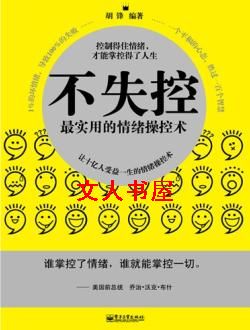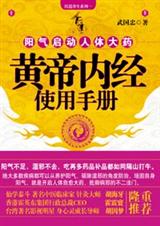牛津实用英语语法-第17章
按键盘上方向键 ← 或 → 可快速上下翻页,按键盘上的 Enter 键可回到本书目录页,按键盘上方向键 ↑ 可回到本页顶部!
————未阅读完?加入书签已便下次继续阅读!
?
'Amber demo'
70反身代词
?
A这类代词有myself,yourself,himself,herself,itself,ourselves,yourselves,themselves。请注意第二人称单数形式yourself和第二人称复数形式yourselves之间的差别。不定反身代词和
不定强调代词为oneself。
B动词所表示的行为施加到施动者自己身上时,也就是主语和宾语同为一人时,用myself,yourself等词作动词的宾语:
I cut myself.
我把自己割伤了。
He can’t shave himself.
他不会给自己刮脸。
It is not always easy to amuse oneself on holiday.
假日自娱并非总是一件容易的事。
Tom and Ann blamed themselves for the accident.
汤姆和安为了这起意外事故责备自己。
This refrigerator defrosts itself.
这台冰箱可自动除霜。
请注意,如果把反身代词换成相互代词each other,其意思就会发生变化:
Tom and Ann blamed each other.
汤姆和安互相责备。(汤姆责备安,安责备汤姆。)
(参见第53节C。)
C myself,yourself等也可用于动词+介词之后:
He spoke to himself.
他暗自心里想着。
Did she pay for herself?
她付了她自己的那一份钱了吗?
Look after yourself.
望你保重。
Take care of yourselves.
希望你们注意身体。
I’m annoyed with myself.
我生自己的气。
He sat by himself.
他独自坐着。
She addressed the envelope to herself.
她在信封收信人处写上了自己的姓名和地址。
但是如果介词是用来指明位置的,一般要用代词而不用反身代词:
Did you take your dog with you?
你把狗带去了吗?
They put the child between them.
他们把孩子放在他们中间。
Had he/Did he have any money on him?
他身上有钱吗?
?
'Amber demo'
71 myself,himself,herself等词用做强调代词
?
myself等词也可用来强调名词或代词:
The king himself gave her the medal.
是国王亲自授予她勋章的。
在讲话中self要重读。
这样使用的这类代词本身决不是必不可少的,如被省略也不会改变句子的意思。这类代词通常用来强调句子的主语,这时应位于主语之后:
Ann herself opened the door.
安亲自开门。Tom himself went.
汤姆亲自去了。
在有宾语时也可位于宾语之后:
Ann opened the door herself.
安亲自开门。
也可位于不及物动词之后:
Tom went himself.
汤姆亲自去了。
如果不及物动词之后是介词+名词结构,强调代词则可位于这一名词之后:
Tom went to London himself./Tom himself went to London.
汤姆亲自去伦敦了。
当它强调另一名词时,则直接位于其之后:
I saw Tom himself.
我看到汤姆本人了。
I spoke to the President himself.
我和总统本人谈话了。
She liked the diamond itself but not the setting.
她喜欢钻石本身,并不喜欢它的镶嵌底座。
注意下列句子的区别:
I did it myself.
是我亲自做的。(是我做的,而不是别人做的。)
I did it by myself.
我独自做的。(我自己做的,没有其他任何人的帮助。)
?
'Amber demo'
第八章?关系代词与关系从句
?
关系从句有三类:限定性关系从句(参见第72节至第77节),非限定性关系从句(参见第78节至第81节),连接性关系从句(参见第82节)。
?
'Amber demo'
72限定性关系从句
?
这类从句修饰前面的名词,使其有别于其他同类名词。这类从句对清楚了解所修饰名词的特征是必不可少的:
The man who told me this refused to give me his name.
告诉我这件事的那个人拒不说出他的姓名。
who told me this是关系从句。如果省略,句中所提到的那个人是谁就不清楚了。要注意,在被修饰的名词和限定性关系从句之间不加逗号。
限定性关系从句常常跟在the+名词之后,但也可以用于a/ an+名词、不加the的复数名词、代词all,none,anybody, somebody等以及those之后。
a/an+名词、不带the的复数名词及somebody/someone/some- thing之后的从句有时只是间接地限定这些名词/代词。
在这种情况下名词/代词常常是动词或介词的宾语:
I met someone who said he knew you.
我碰到了说自己认识你的一个人。
The book is about a girl who falls in love with…
这本书是关于一个女孩,她爱上了……
有时这些从句由一个词或短语将它们与名词/代词分开:
There’s a man here who wants…
这儿有个男人,他想要……
I saw something in the paper which would interest you.
我在报上看到了一些你会感兴趣的东西。
但是,通常关系从句应该紧跟在它们修饰的名词或代词之后:
The noise that he made woke everybody up.
他弄出的响声把大家都吵醒了。
She was annoyed by something that I had said.
她为我说的某句话而不高兴。
?
'Amber demo'
73用于限定性关系从句的关系代词
?
词形变化如下:
==================================
ABC Amber CHM Converter v6。22
Trial version
==================================
?
'Amber demo'
74指人的限定性关系从句
?
A主格
用who或that,通常用who:
The man who robbed you has been arrested.
抢劫你的那个人已经被逮捕了。
The girls who serve in the shop are the owner’s daughters.
在店里接待顾客的那几个女孩都是店老板的女儿。
Only those who had booked in advance were allowed in.
只有那些预先订票的人可以进去。
Would anyone who saw the accident please get in touch with the police?
凡亲眼看见发生事故的人请与警方联系。
但是在all,everyone,everybody,no one,nobody和those后面,也可用that替代who:
Everyone who/that knew him liked him.
认得他的人都喜欢他。
Nobody who/that watched the match will ever forget it.
看了这场比赛的人都不会忘记它。
B动词的宾语
用whom,who或that。
指人的关系代词的宾格形式是whom,但这被认为是十分正规的说法。在口语中经常使用who和that来代替whom(that 比who更常用);更加普遍的是索性把宾格关系代词省略:
The man whom I saw told me to e back today.
我见到的那个人叫我今天返回。或:
The man who I saw…
The man that I saw…
The man I saw…(省略关系代词)
The girls whom he employs are always plaining about their pay.
他雇用的那些女孩子们老是抱怨薪水太低。或:
The girls who he employs…
The girls that he employs…
The girls he employs…(省略关系代词)
C介词的宾语
用whom或that。
在正规的英语中介词通常位于关系代词之前,这时关系代词
必须使用whom这一形式:
the man to whom I spoke我跟说话的那个人
而在非正式的口语中经常把介词置于句末。这时用that来代替whom,但更加普遍的是索性省略关系代词:
the man who/whom I spoke to
the man that I spoke to
the man I spoke to
同样:
The man from whom I bought it told me to oil it.
卖给我这件东西的那个人嘱咐我给它上点油。或:
The man who/that I bought it from…
The man I bought it from…
The friend with whom I was travelling spoke French.
和我一起旅行的那个朋友讲法语。或:
The friend who/that I was travelling with…
The friend I was travelling with…
D所有格
关系代词的所有格只有whose这一种形式:
People whose rents have been raised can appeal.
那些被增加了租金的人可以上诉。
The film is about a spy whose wife betrays him.
这部电影是关于一个被自己妻子出卖的间谍的故事。
?
'Amber demo'
75指物的限定性关系从句
?
A主语
用which或that,而which较正式:
This is the picture which/that cansed such a sensation.
这就是那部轰动一时的电影。
The stairs which/that lead to the cellar are rather slippery.
通向地窖的楼梯相当滑。
(另参见下面B。)
B动词的宾语
用which,that或干脆省略关系代词:
The car which/that I hired broke down.或:
我租用的那辆小汽车抛锚了。
The car I hired…
一般在all,everything,little,much,none,no,由no构成的复合词及形容词的最高级形式之后很少使用which,而常用that。如果这个关系代词是动词的宾语时也可省略:
All the apples that fall are eaten by the pigs.
掉在地上的苹果都让猪吃了。
This is the best hotel(that) I know.
这是我所知道的最好的饭店。
C介词的宾语
规范的结构是介词+which,但通常都把介词移到从句的末尾,用关系代词which,that或干脆省去关系代词:
The ladder on which I was standing began to slip.
我脚下的梯子开始向下滑动。或:
The ladder which/that I was standing on began to slip.
The ladder I was standing on began to slip.
D所有格
可以用whose+从句这种结构,但通常是用with+短语这种结构来代替它:
a house whose walls were made of glass用玻璃做墙的房子
a house with glass walls(译文同上)
E关系副词
用when,where,why。
注意:when可以代替用于指时间的in/on which:
the year when(=in which)he was born他出生的那一年
the day when(=on which)they arrived他们到达的那一天
where可以代替用于指地点的in/at which:the hotel/where(=in/at which) they were staying他们当时住的旅店why可代替for which:
The reason why he refused is…
他拒绝的理由是……
when,where和why有这种用法时叫做关系副词。
?
'Amber demo'
76分裂句:it+be+名词/代词+限定性关系从句
?
It was 'Tom who helped us.
是汤姆帮助了我们。(不是比尔或杰克)
It was 'Ann that I saw 。
我看见的是安。(不是玛丽)
如上文那样宾语是专有名词时,that要比who更常用。用于指其他一切宾语时,that是正确的:
It’s the manager that we want to see.
我们要见的是经理。
It was wine that we ordered.
我们要的是红葡萄酒。(不是啤酒)
that常用于指非人称主语:
It’s speed that causes accidents,not bad roads.
造成车祸的常是超速行驶,而不是路况不好。
?
'Amber demo'
77用不定式或分词替代关系从句的情况
?
A不定式可用于下列各情况:
1在the first/second等词及the last/only等词之后,有时还在最高级形式之后:
the last man to leave the ship=the last man who left/leaves the ship最后离开船的那个人
the only one to understand=the only one who understood/understands唯一理解的人
注意:这里的动词不定式取代了主格代词+动词的结构。但它不能用来取代宾格代词+动词的结构,如the first man that we saw(我们看见的第一个人)中的从句就不能用动词不定式来代替,因为the first man to see(首先要见的人)这句话表示的是截然不同的意思。但如果that是被动句的主语,如the first man that was seen(第一个被看见的人),则可用一个动词不定式的被动形式:the first man to be seen(第一个被看见的人)来代替这一从句。
2句中含某种目的或许可的意义时:
He has a lot of books to read.
他有许多书要读。(许多可以读或必须要读的书)
She had something to do.
她有事要办。(一件她可





